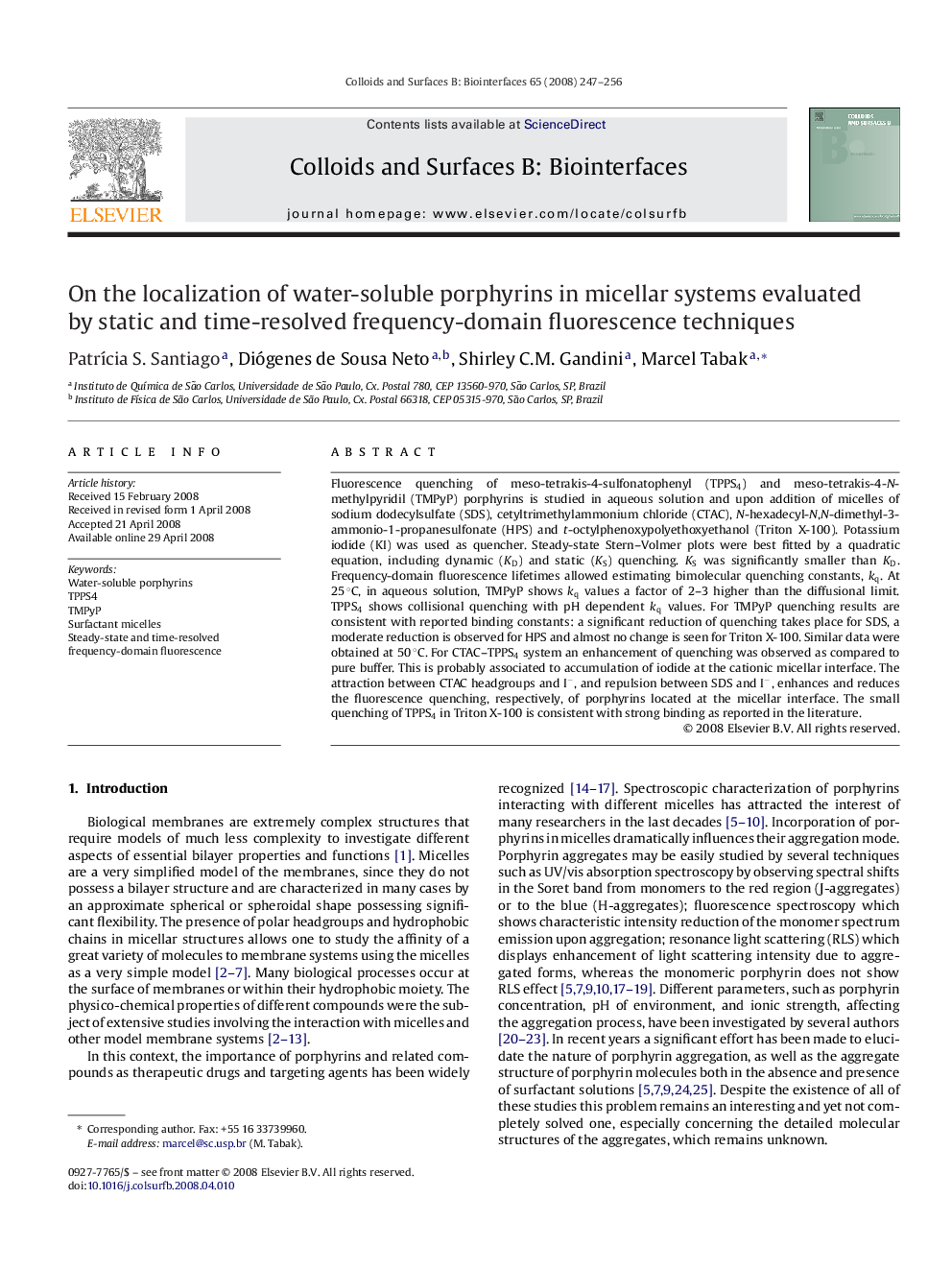| Article ID | Journal | Published Year | Pages | File Type |
|---|---|---|---|---|
| 602757 | Colloids and Surfaces B: Biointerfaces | 2008 | 10 Pages |
Abstract
Fluorescence quenching of meso-tetrakis-4-sulfonatophenyl (TPPS4) and meso-tetrakis-4-N-methylpyridil (TMPyP) porphyrins is studied in aqueous solution and upon addition of micelles of sodium dodecylsulfate (SDS), cetyltrimethylammonium chloride (CTAC), N-hexadecyl-N,N-dimethyl-3-ammonio-1-propanesulfonate (HPS) and t-octylphenoxypolyethoxyethanol (Triton X-100). Potassium iodide (KI) was used as quencher. Steady-state Stern-Volmer plots were best fitted by a quadratic equation, including dynamic (KD) and static (KS) quenching. KS was significantly smaller than KD. Frequency-domain fluorescence lifetimes allowed estimating bimolecular quenching constants, kq. At 25 °C, in aqueous solution, TMPyP shows kq values a factor of 2-3 higher than the diffusional limit. TPPS4 shows collisional quenching with pH dependent kq values. For TMPyP quenching results are consistent with reported binding constants: a significant reduction of quenching takes place for SDS, a moderate reduction is observed for HPS and almost no change is seen for Triton X-100. Similar data were obtained at 50 °C. For CTAC-TPPS4 system an enhancement of quenching was observed as compared to pure buffer. This is probably associated to accumulation of iodide at the cationic micellar interface. The attraction between CTAC headgroups and Iâ, and repulsion between SDS and Iâ, enhances and reduces the fluorescence quenching, respectively, of porphyrins located at the micellar interface. The small quenching of TPPS4 in Triton X-100 is consistent with strong binding as reported in the literature.
Related Topics
Physical Sciences and Engineering
Chemical Engineering
Colloid and Surface Chemistry
Authors
PatrÃcia S. Santiago, Diógenes de Sousa Neto, Shirley C.M. Gandini, Marcel Tabak,
